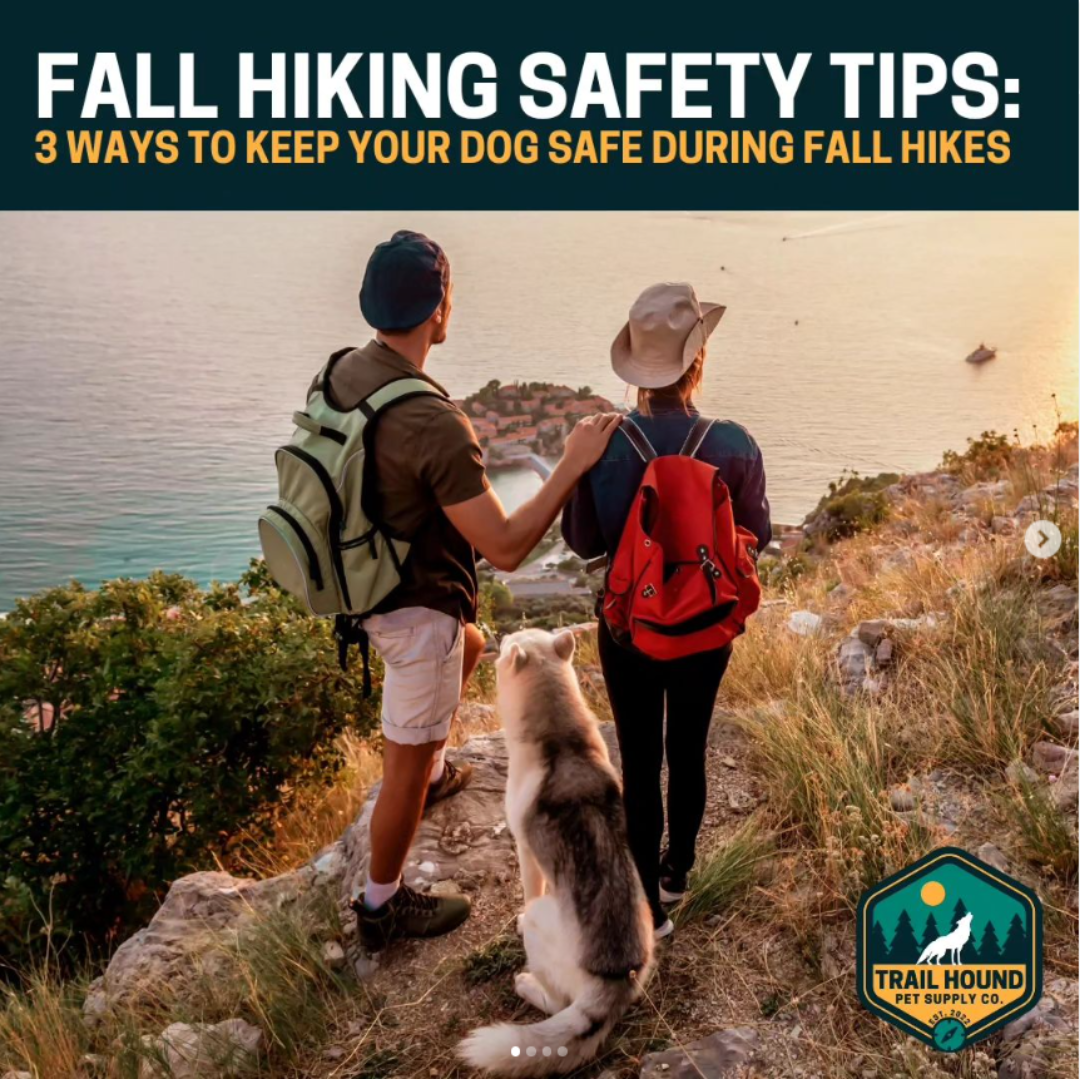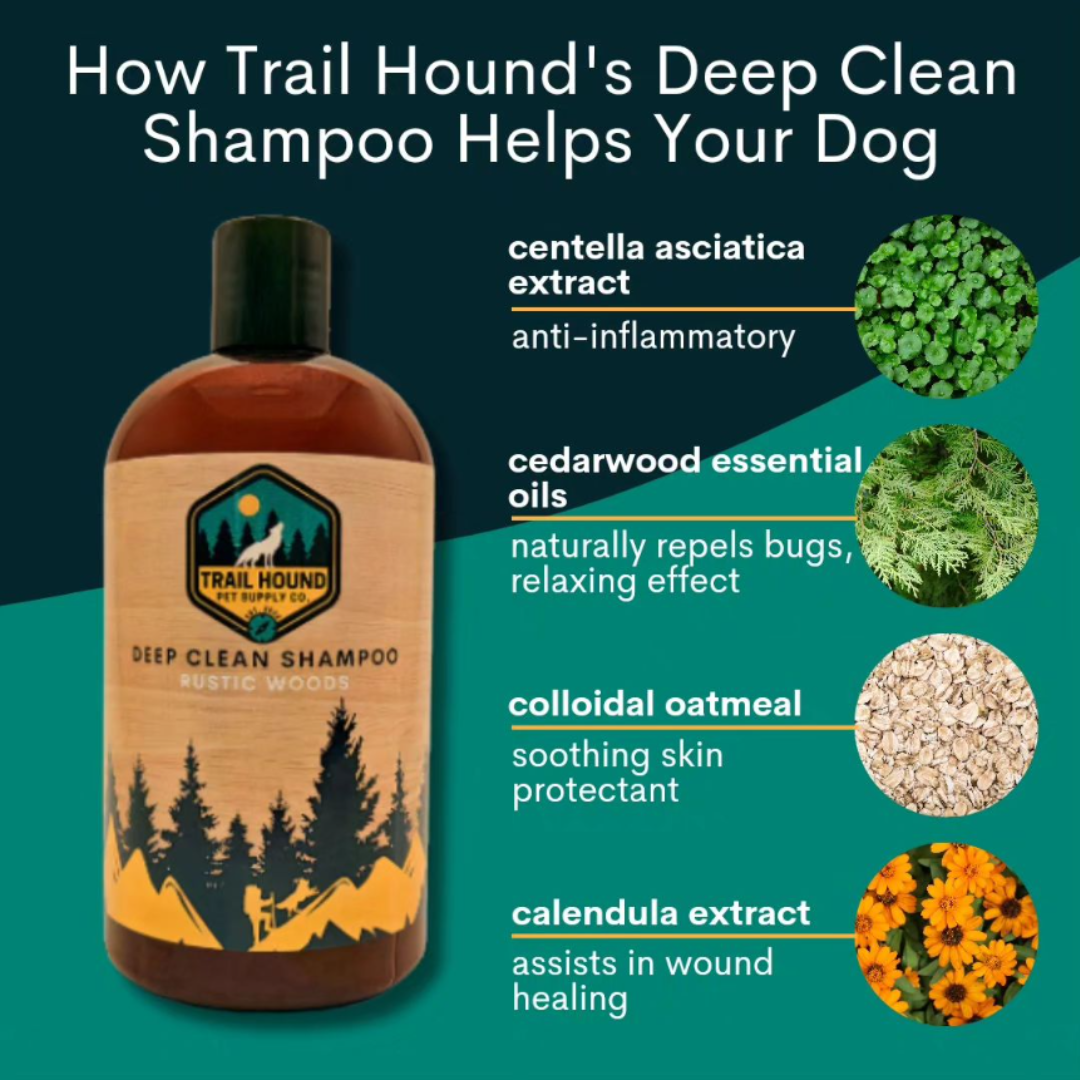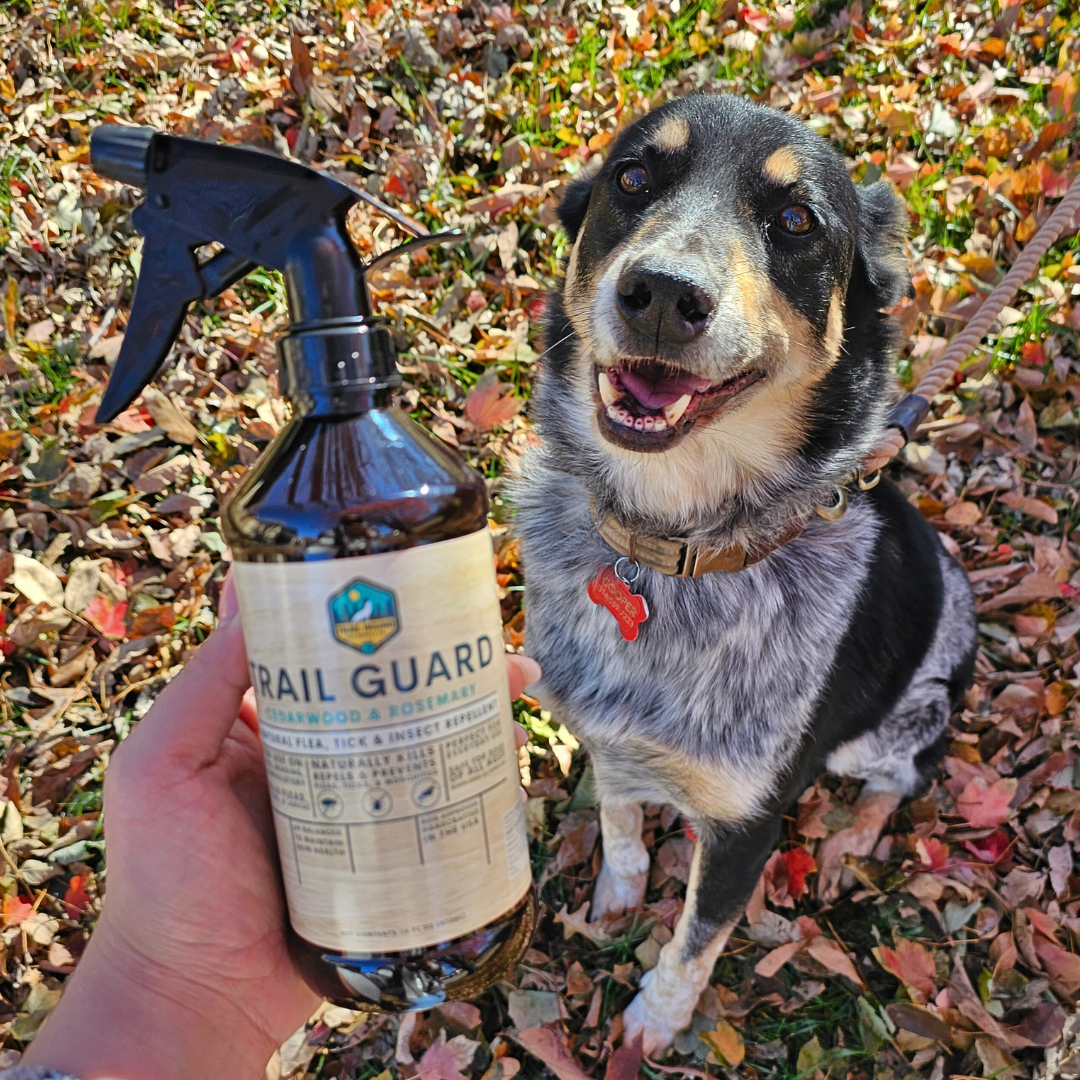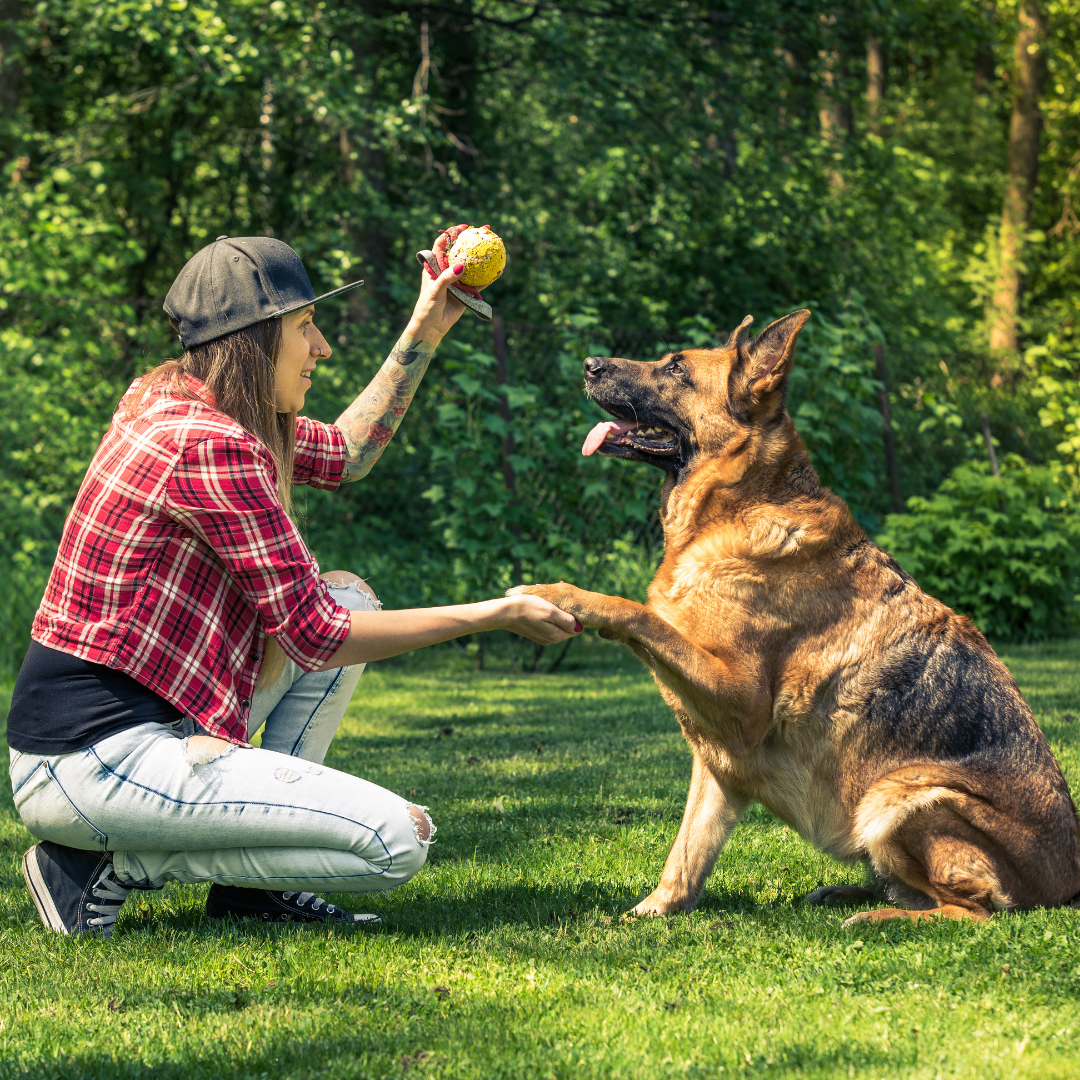

Adventuring with Paws: A Dog Lover's Guide to Handling the Top 8 Hiking Hazards
Exploring the great outdoors with your beloved dog offers more than just exercise; it deepens the unspoken bond between you and your loyal companion.
As you both relish the beauty and serenity of nature, it's vital to remember that the wilderness, with all its splendor, comes with its own set of hazards. For devoted pet parents, especially those who cherish their dog's health and happiness as much as their own, recognizing and preparing for these potential hazards is essential.
This guide is designed to help you confidently face these challenges, ensuring that each outdoor adventure is a delightful and secure experience for both you and your cherished furry friend.
Hazard 1: Fleas, Ticks, & Mosquitoes (Top Threat):
During hikes, dogs face health risks from ticks, fleas, and mosquitoes. Ticks can transmit Lyme disease, leading to fever and joint pain, while fleas may cause allergic dermatitis and skin infections. Mosquitoes are a threat due to heartworm, which can severely affect a dog's heart and lungs. These parasites can also cause anemia from blood loss, skin issues, and infections. Additionally, mosquitoes and biting insects can create general discomfort or irritation for dogs, similar to their effect on humans.
We suggest using a non-toxic flea & tick treatment like Trail Guard Flea and Tick Spray that harnesses the power of natural ingredients, providing a chemical-free, plant-based barrier against these pests. Proven as effective as conventional chemicals flea & tick treatment.

Hazard #2: Overheating & Dehydration
Dogs are at high risk of heatstroke and dehydration during hikes, which can be extremely dangerous for their health. This risk is increased substantially in the warmer summer months & especially in the southern US states.
It’s crucial to take proactive steps like frequent hydration breaks using portable water bowls, and equipping your dog with cooling gear. Additionally, choosing shaded trails, taking frequent breaks and avoiding hikes during the hottest parts of the day can help prevent these risks. Pre planning your hike to include stops a local watering holes & creaks will also help to ensure proper hydration for your 4 legged friend.
These simple yet effective measures ensure your dog stays safe and comfortable while enjoying the outdoors with you.
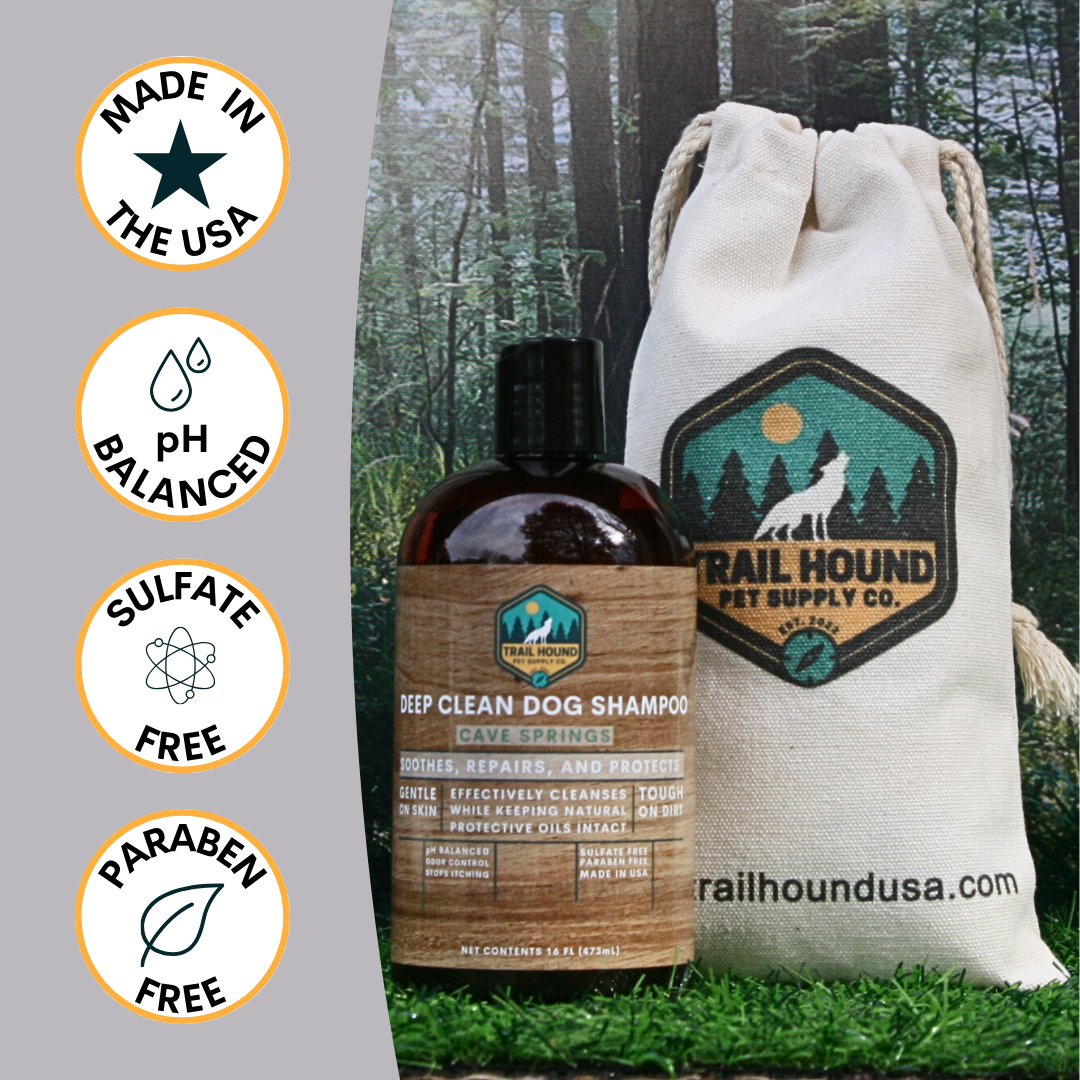
Hazard #3 Allergens & Skin Irritants
Nature's trails are often laden with allergens and irritants such as pollen, mold, and harsh plants, which can lead to discomfort in dogs, causing itching, rashes, or even allergic reactions.
We suggest using a natural shampoo like Deep Clean Dog Shampoo which is formulated with premium natural ingredients known for their soothing and healing properties.
A gentle wash after hiking helps cleanse away irritants and restore your dog's skin oils, providing relief and protection from environmental irritants.
Hazard #4 Wildlife Encounters
Encounters with wildlife during hikes can be dangerous due to the unpredictability of wild animals, which may feel threatened by your dog’s presence. Animals like bears, coyotes, or even snakes can react defensively, potentially leading to serious injuries.
Smaller creatures, while less intimidating, can carry diseases transmissible to dogs. Additionally, certain wildlife such as birds of prey may view smaller dogs as prey, creating a risky situation. Hence, understanding and preparing for these encounters is crucial for the safety of your canine companion.
To protect your dog, always keep them on a leash and ensure they respond well to recall commands. Having a dog-specific first aid kit is vital for addressing any injuries immediately. Additionally, familiarizing yourself with the local wildlife and their behaviors can help you anticipate and avoid potential risks, keeping your outdoor adventures with your dog safe and enjoyable.
Hazard # 5 Fatigue & Injury
Remember, Intensive hiking trails can be physically demanding, leading to fatigue, muscle strains, or more serious injuries in dogs. Their enthusiasm can often mask early signs of discomfort, making it crucial for pet owners to be vigilant.
Conscientious Care: To prevent such issues, it's important to gradually increase the length and difficulty of hikes, allowing your dog to build endurance safely. Regularly monitoring your dog’s energy and behavior for signs of fatigue or discomfort during hikes is essential.
Providing joint support supplements can also help maintain their mobility and overall joint health. After each hike, a thorough check for any potential injuries and ensuring your dog has plenty of time to rest and recuperate is essential for their well-being and readiness for future adventures.
Hazard #6 Rough Terrain & Water Exposure:
Hiking often involves navigating through challenging terrains that expose your dog's paws to rough conditions. Sharp rocks, thorny underbrush, and extended periods in water can result in cuts, abrasions, or lead to dry and cracked paws, which can be painful and impede their mobility
To combat these issues, we suggest Paw Protection Balm from Trial Hound. Expertly crafted using a blend of natural waxes and nourishing oils, this premium balm creates a resilient protective barrier on your dog’s paws. It not only shields them from abrasive surfaces but also helps maintain optimal moisture levels, especially after engaging in water-related activities.
This balm is a perfect way to ensure your furry friend's paws stay healthy and comfortable in various environments.
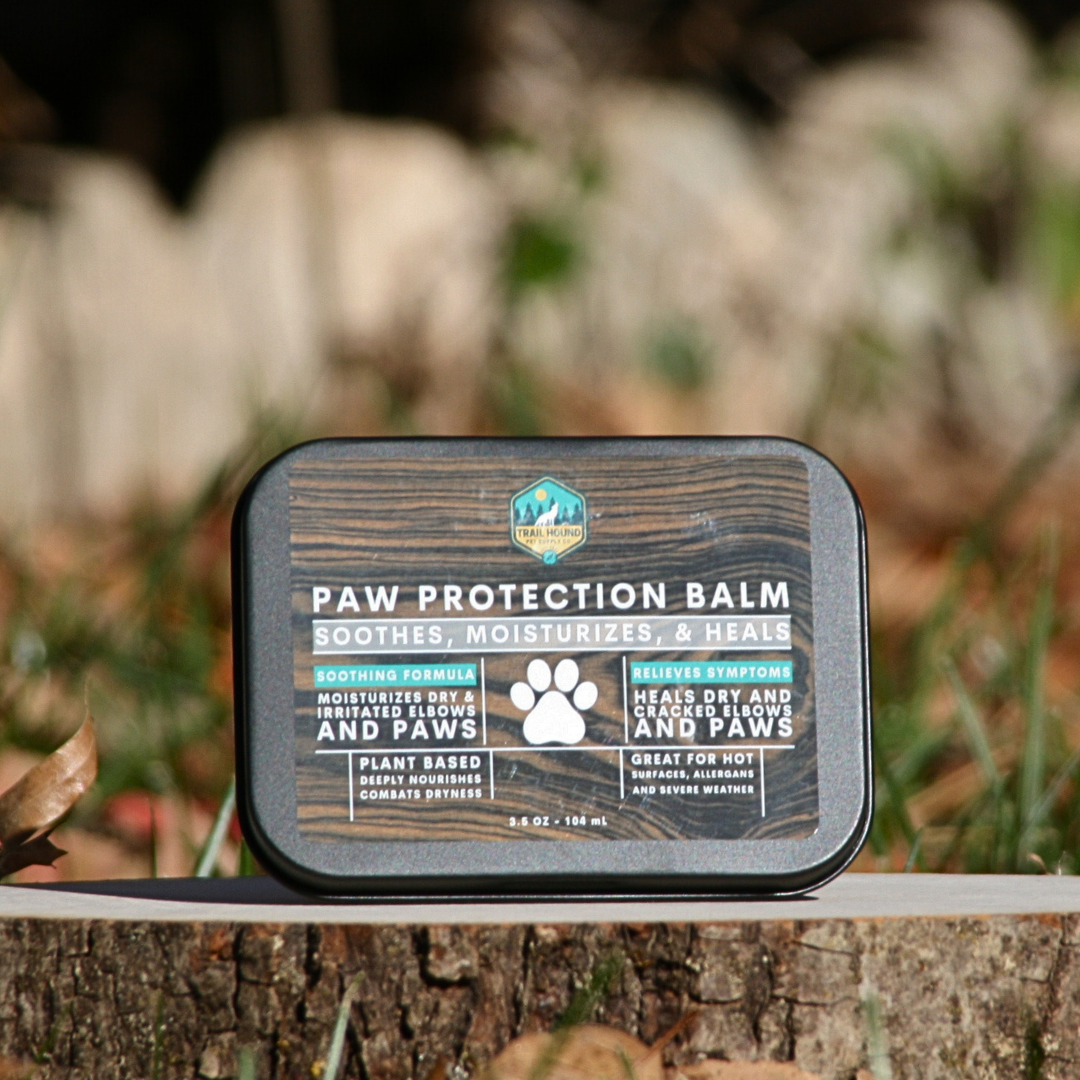
Hazard #7 Inclement Weather
Sudden weather changes can be a significant challenge for hikers, including those with extensive experience. Adequate preparation for such extremes is crucial for the safety and comfort of both hikers and their canine companions.
Equipping your dog with weather-ready gear is essential. This includes waterproof clothing to keep them dry in wet conditions, dog boots for protecting their paws from rough terrains and extreme temperatures, and thermal wear for maintaining body heat in cold climates.
Additionally, it's important to always check the weather forecast before embarking on a hike and be ready to adapt to unexpected conditions, ensuring a safe and enjoyable outdoor experience.
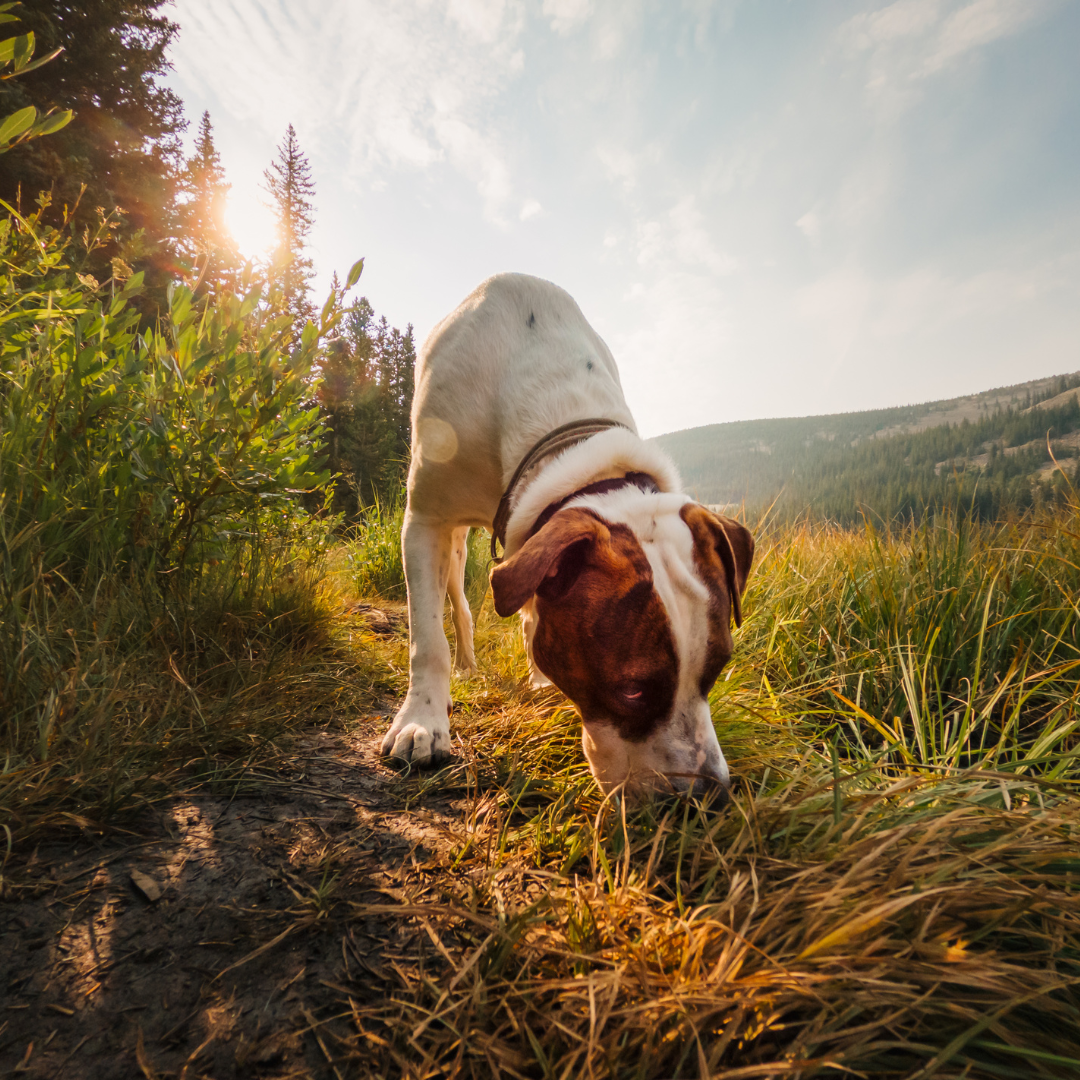
Hazard #8 Getting Lost
The unfamiliarity of wilderness can increase the risk of dogs getting lost during hikes.
To address this, essential safety measures include training your dog with a reliable recall command, ensuring they have updated ID tags, and using a GPS tracker.
These steps help in quickly locating and retrieving a lost dog. Additionally, gradually familiarizing your dog with hiking environments through shorter trails can help them become more comfortable and less likely to wander off in new surroundings.
These precautions are key to a safer and more enjoyable hiking experience for both you and your dog.
Join the Pack
Signing up for the Trail Hound email list brings a pack of benefits that any dog lover and outdoor enthusiast would wag their tail for! Here are some of the perks:
Exclusive Offers and Discounts
Early Access to New Products
Tail-Wagging Tips and Tricks: Receive valuable insights, tips, and tricks for outdoor adventures with your furry friend, all curated by fellow dog lovers and outdoor experts
Adventure and Wellness Education: Get educational content that helps you and your dog stay safe and enjoy the wilderness to the fullest, including guides, how-tos, and wellness advice
Inspiring Stories
Community Events and Updates
Feedback and Influence: Have the opportunity to give feedback, influence future products, and be an integral part of the Trail Hound pack
Joining the Trail Hound email list isn't just about getting emails; it's about becoming a part of a community that shares your passion for dogs and the great outdoors! 🐾🌲

Join The Trail Hound Pack - The Barkington Press Newsletter
CHECK OUT OUR MOST POPULAR BLOG CONTENT
Dig Into One Of Our Educational Field Guides! Learn How to Tackle Nature With Your Four Legged Pal Together With Trail Hound!

Follow us on Instagram


